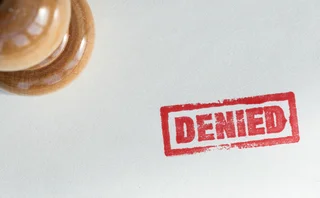Anthony Malakian: Studying the Bottom of a Pint Glass

In college, I waited until the last minute to do anything. Paper due? What better time to get cracking than the night before? And if a snow storm pushed a test back a few days, the only thing I’d be studying was how best to get to the bottom of a pint glass.
Sometimes I think hedge fund managers are no better. Take their reaction to Form PF, or Private Fund, a product of the Dodd–Frank Act created by both the US Securities and Exchange Commission (SEC) and the US Commodity Futures Trading Commission (CFTC). However, it’s hardly a “form” at 44 pages long and thousands of data points.
Form PF was created to allow regulators to monitor systemic risk. But in many ways, it’s a legal excuse for the powers that be to play Big Brother to the hedge fund community. “The SEC is looking for a reason to come in and dig around in these hedge funds, and this is the regulator’s way of getting a look into their books and records for systemic risk,” says Jonathan White, business development manager at fund administrator, Viteos Fund Services.
Wait and See
You’d think that fund managers would be preparing by getting their proverbial ducks in row. Yet, most are waiting for a snow storm. “There are certainly a good number of people hoping the SEC will delay because they’re probably much less prepared for this date than would be optimal if the date is, indeed, as advertised,” says GlobeOp president and COO Vernon Barback.
The SEC has yet to finalize the rule and give a date for compliance. A rough deadline is Jan. 1, 2012—which would mean that firms with more than $1 billion in combined assets under management and leverage are required to have their forms handed in by Jan. 15, 2012.
Yet most funds are expecting the SEC to delay its final rules until April, if not later, and that the SEC may even soften some of the requirements. There’s also a sense that even if the Jan. 1 deadline sticks, there is no way that the SEC would be able to handle the deluge of forms—and subsequent data—that would fall onto its desk. So, for the first few quarters of 2012, the regulators will not be scouring these forms with maximum efficiency and will allow some errors to slide.
This is risky business. The regulators are trolling for systemic risk, but for the hedge funds this is more about headline risk. As White points out, if the regulators find inaccuracies in your data, it’s not going to lead to an audit—it’s going to lead to an investigation.
Ask yourself this: Do you really want your firm to appear on the front page of The Wall Street Journal with the headline, “Investigators Raid [insert your hedge fund’s name here]”?
I’m not saying fund managers should go out and invest in a new data aggregation system. It would be somewhat foolish to throw money at a moving target. But it would be equally foolish not to prepare for something that will—eventually—become a reality.
So make a plan. Here’s how, with feedback from Barback and White.
First, talk to your lawyers and become intimately familiar with Form PF and what your firm will need to do to comply. Second, have a serious conversation with your data people—in-house—or fund administrator.
Next, find out—if you don’t already know—where your data sources are, go out to those sources—sooner rather than later—and find out if they can provide the needed data points, with all the attributes, and whether that data can be retrieved within a 15-day period. And at some point, do a minimal level of testing to find out if the data is normalized correctly, with the attribution attached. “I don’t think fund managers are taking this seriously enough,” White says. “The assumption is that the requirements in the form will change—that’s highly doubtful.”
I’m also surprised that more fund administrators aren’t getting out in front of this. At the risk of shamelessly plugging GlobeOp and Viteos, I have to commend both firms for actively banging the drum on this issue. Too often we talk about end users not being prepared for something coming down the pike, but in this instance I think that both sides of the Street may be caught with their pants down.
Only users who have a paid subscription or are part of a corporate subscription are able to print or copy content.
To access these options, along with all other subscription benefits, please contact info@waterstechnology.com or view our subscription options here: http://subscriptions.waterstechnology.com/subscribe
You are currently unable to print this content. Please contact info@waterstechnology.com to find out more.
You are currently unable to copy this content. Please contact info@waterstechnology.com to find out more.
Copyright Infopro Digital Limited. All rights reserved.
As outlined in our terms and conditions, https://www.infopro-digital.com/terms-and-conditions/subscriptions/ (point 2.4), printing is limited to a single copy.
If you would like to purchase additional rights please email info@waterstechnology.com
Copyright Infopro Digital Limited. All rights reserved.
You may share this content using our article tools. As outlined in our terms and conditions, https://www.infopro-digital.com/terms-and-conditions/subscriptions/ (clause 2.4), an Authorised User may only make one copy of the materials for their own personal use. You must also comply with the restrictions in clause 2.5.
If you would like to purchase additional rights please email info@waterstechnology.com
More on Regulation
Experts say HKEX’s plan for T+1 in 2025 is ‘sensible’
The exchange will continue providing core post-trade processing through CCASS but will engage with market participants on the service’s future as HKEX rolls out new OCP features.
No, no, no, and no: Overnight trading fails in SIP votes
The CTA and UTP operating committees voted yesterday on proposals from US exchanges to expand their trading hours and could not reach unanimous consensus.
Big xyt exploring bid to provide EU equities CT
So far, only one group, a consortium of the major European exchanges, has formally kept its hat in the ring to provide Europe’s consolidated tape for equities.
Jump Trading CIO: 24/7 trading ‘inevitable’
Execs from Jump, JP Morgan, Goldman Sachs, and the DTCC say round-the-clock trading—whether five or seven days a week—is the future, but tech and data hurdles still exist.
Pisces season: Platform providers feed UK plan for private stock market
Several companies in the US and the UK are considering participating in a UK program to build a private stock market composed of separate trading platforms.
How to navigate regional nuances that complicate T+1 in Europe
European and UK firms face unique challenges in moving to T+1 settlement, writes Broadridge’s Carl Bennett, and they will need to follow a series of steps to ensure successful adoption by 2027.
Nasdaq leads push to reform options regulatory fee
A proposed rule change would pare costs for traders, raise them for banks, and defund smaller venues.
The CAT declawed as Citadel’s case reaches end game
The SEC reduced the CAT’s capacity to collect information on investors, in a move that will have knock-on effects for its ongoing funding model case with Citadel.








